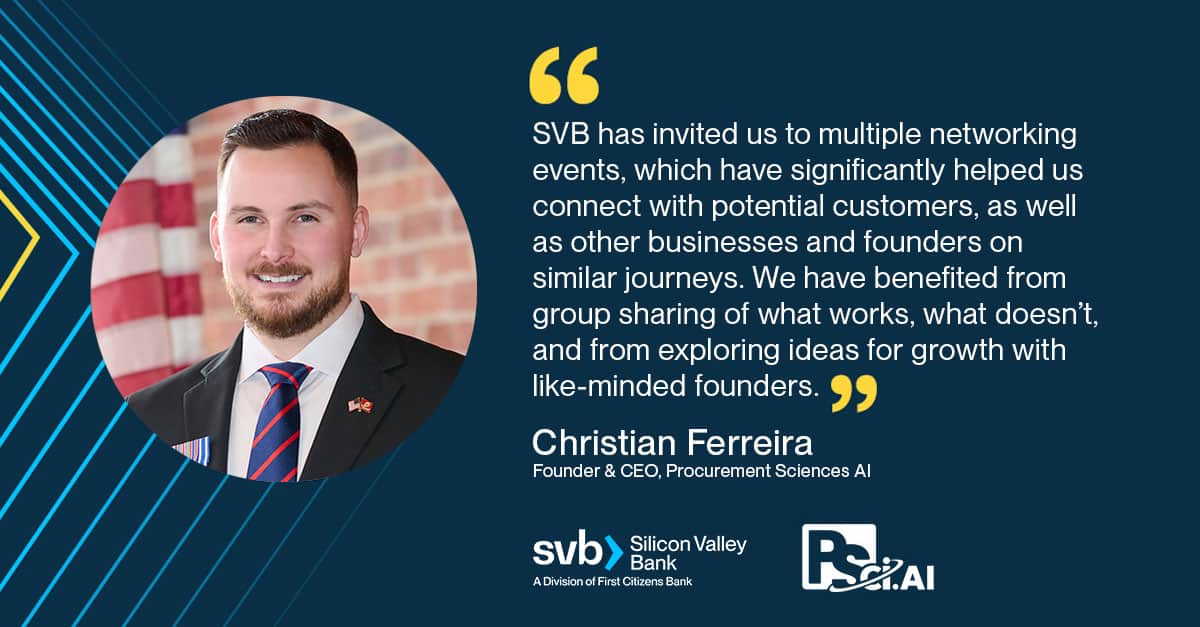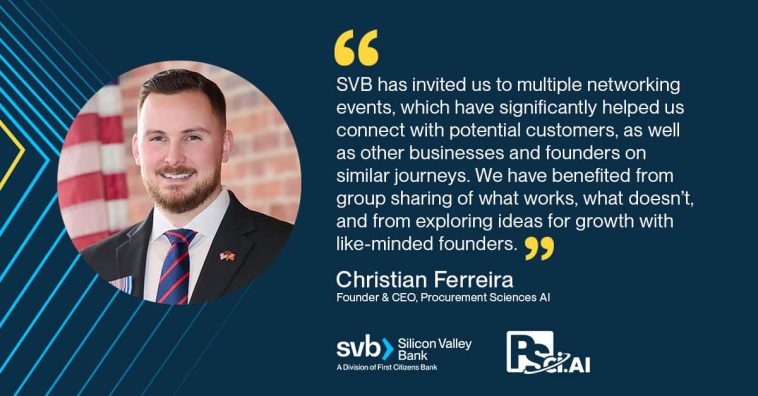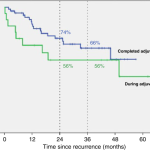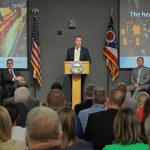
Opinion: UC Davis Engineering’s Bold Leap into AI Innovation
The University of California, Davis, College of Engineering has long been known for its groundbreaking efforts in research and innovation. Recently, its AI Innovation Showcase and Prem Jain Symposium put the spotlight firmly on the exciting intersection of artificial intelligence and industry, laying out a vision that blends academic research with practical solutions for today’s pressing challenges. This event underscored how a strong partnership between academia and industry can transform the landscape of technology.
Observing the discussions and presentations was like watching a convergence of ideas that can help steer our future—an opportunity not only to see the latest advancements in AI but also to consider how these innovations can be translated into tangible solutions. This event was more than a technical gathering. It was an opinionated demonstration of what is possible when research meets entrepreneurial spirit, when the clever minds of UC Davis and its industry partners work through the tricky parts and tangled issues that truly shape the field.
Accelerating AI Research: Industry Partnerships with Academia
One of the standout themes of the gathering was the role of strategic partnerships in fueling AI research. Industry partners, alumni, and faculty came together with a shared goal: to take a closer look at the potential of artificial intelligence to reshape industries ranging from healthcare to energy management. With over 100 participants, the event was a microcosm of collaboration—where ideas were exchanged, budding startups were introduced, and diverse projects found common ground.
The involvement of key figures such as Prem Jain, co-founder of Pensando Systems and UC Davis engineering alum, highlighted the critical importance of investment in education and research. His vision for UC Davis as a global powerhouse in AI research was both inspiring and a call to action for all stakeholders. His speech set the tone for the symposium, emphasizing that collaboration and steadfast investment in research infrastructure can help transform groundbreaking ideas into real-world solutions.
AI Ecosystem Expansion and Interdisciplinary Collaboration
The AI Innovation Showcase demonstrated that the success of an AI ecosystem depends not only on nurturing technical talent but also on fostering interdisciplinary collaboration. Faculty members, from computer science to mechanical and aerospace engineering, discussed projects that lie at the intersection of different fields. For instance, one project harnessed AI for early detection of health-related conditions, while another focused on revolutionary cooling technologies to boost energy efficiency in data centers.
This interdisciplinary approach is essential for tackling the tricky parts of technology development. It means finding your way through both the big picture and the fine points that each subfield offers. When technical experts join forces, the result is a richer, more innovative tapestry of ideas where even the subtle parts—those little twists in conventional methods—can spark a breakthrough.
Investing in Startups: Building Bridges from Lab to Market
A valuable takeaway from the symposium was the critical role played by AI startups and the entrepreneurial spirit within the academic environment. The event showcased several student ventures, including projects like VitalCue—a startup using kinetic data capture and machine learning to spot early signs of disease decline. These startups are perfect examples of how academic research can be transformed into practical, market-ready solutions.
Funding initiatives such as the Prem Chand Jain Family Presidential Chair for Innovation and Entrepreneurship are super important in bridging the gap between fundamental research and commercialization. This funding and mentorship are what allow promising ideas to evolve into ventures that not only drive economic growth but also improve societal outcomes. Young innovators can now tackle the overwhelming technical challenges with the support of experienced mentors and industry insight, figuring a path through the nerve-racking twists and turns of startup life.
Educational Foundations: The Role of Knowledge in AI Advancement
Beyond the buzz of technology and commercialization, the symposium emphasized a core component of AI’s future: education. Diane Bryant, former chairman and CEO of NovaSignal, delivered an industry keynote that stressed the need for a robust educational foundation. According to her, AI’s rapid progression rests on the ability to provide a well-rounded education to students that marries theory with practice.
As AI moves at lightning speed into all corridors of life, it is essential for academic institutions to incorporate both traditional engineering disciplines and emerging digital technologies. Educators at UC Davis are taking a close look at how to equip students with skills that let them manage their way through the challenging bits of real-world applications. With new courses and collaborative projects in place, graduates are poised to not only work with current technology but also to drive innovation forward.
Strategic Academic Initiatives for Tomorrow’s AI Leaders
One of the more intriguing aspects discussed was the pivot toward an AI-enhanced curriculum that covers both the theoretical and practical aspects of technology. Faculty like Chen-Nee Chuah and Dipak Ghosal are already at the forefront—developing programs that encourage students to not only understand AI applications in health and robotics but also to get into the fine points of entrepreneurial innovation. This move is critical because it lays the groundwork for a future where academic theories are not isolated in lecture halls but actively drive changes in industry.
Moreover, integrating AI into academic curricula has the potential to create a multiplier effect. When students see real-world applications of their studies, they are more inclined to explore the overlapping domains of AI and industrial manufacturing, thereby generating new opportunities for collaboration across traditional disciplinary borders.
Challenges and Opportunities: Working Through Tricky Parts and Tangled Issues
No pioneering initiative is without its challenges. Even with tremendous enthusiasm and resources, there remain several intimidating hurdles and confusing bits in the path of AI research and innovation. From energy efficiency in expansive data centers to the integration of AI with robotics in controlled environments, each project introduces its own set of complicated pieces that demand both creative solutions and unwavering commitment.
Tackling the Overwhelming Technical Obstacles
Industry leaders discussed how AI research often entails navigating through a web of complex power consumption issues and scalability challenges. These are not mere academic exercises but real-world problems that require careful attention to the little details that can make or break a project. For example, Vinod Narayanan’s work on dry cooling technologies for modular data centers directly addresses some of these technical obstacles, providing sustainable solutions that could have widespread industrial applications.
The panel discussion, which featured a blend of research experts and industry veterans, highlighted the necessity of managing your way through both the obvious and hidden complexities of AI. The group explored the need for cooler, more efficient data centers, the rising energy requirements of AI algorithms, and the critical importance of converting academic breakthroughs into commercial products.
Industry Panels: Unpacking the Fine Details
The symposium’s panel discussion showcased a range of perspectives from leaders such as Michael Hurlston, president and CEO of Lumentum, and Saif Islam, a twice-time startup founder and distinguished professor. Their insights painted a picture of a rapidly evolving industry full of exciting, yet sometimes nerve-racking, prospects. The session was loaded with practical ideas on how best to methodically figure a path between ambitious AI concepts and realistic industrial applications.
A table below summarizes key topics discussed during the panel:
| Topic | Discussion Focus | Potential Impact |
|---|---|---|
| Energy Efficiency | Innovative cooling technologies and scalable power solutions | Reduced operating costs and environmental benefits |
| Data Center Management | Integration of AI for system optimization and monitoring | Enhanced performance and reliability in industrial applications |
| AI in Robotics | Synergy between AI algorithms and physical systems | Automation across sectors with improved precision |
| Commercialization of Research | Bridging the gap between lab research and market applications | Economic growth through innovative startups |
By working through these tricky parts, the symposium not only identified the challenges but also illuminated the ways forward. The dialogue emphasized that while these problems may seem intimidating at first, a combination of interdisciplinary expertise, strategic investment, and relentless ambition can overcome even the most twisted issues.
Commercializing AI and Promoting Entrepreneurial Growth
Another focus of the symposium was the tangible translation of research into marketable, socially useful products. Alfred Chuang, a computer science alumnus and founder of Race Capital, delivered a compelling message about the role of interdisciplinary projects in reshaping the modern landscape of AI. His remarks reinforced the idea that innovation is best achieved when academia and industry work hand in hand to address real-world needs.
From Research Labs to Robust Market Solutions
There was a clear consensus that universities have a super important role in ensuring that research moves beyond the confines of academic journals. By actively fostering closer ties with entrepreneurs and venture capitalists, institutions like UC Davis are not simply generating impressive research—they are laying the framework for new companies that can embrace the latest technologies and transform them into industry-leading innovations.
The steps to achieve this include:
- Investment in Talent: Creating programs and funding mechanisms that provide students and researchers a pathway to develop their ideas.
- Industry Mentorship: Encouraging collaborations where experienced professionals share insights and help young entrepreneurs steer through possible pitfalls.
- Public-Private Partnerships: Facilitating joint ventures that offer resources and market expertise to promising startups.
- Integrated Innovation Platforms: Building innovation hubs that combine academic research with business acumen for seamless technology transfer.
These action items not only help translate innovative ideas into real-world applications but also create an ecosystem that supports continuous learning and reinvestment into the AI sector.
AI and Sustainability: Research with a Purpose Beyond Technology
The dedication of the UC Davis College of Engineering to AI research signals more than just a race to innovate—it reflects a broader commitment to sustainability and societal benefit. Projects aiming to improve energy efficiency and optimize resource usage in data centers have implications that stretch far beyond academic bragging rights. They hold the promise of addressing global issues such as climate change and energy shortages.
Implementing AI for a Greener Tomorrow
The application of AI technologies to create smart, sustainable solutions is a testament to the transformative power of research when applied thoughtfully. Researchers at UC Davis are working on initiatives that combine AI with environmental management strategies to deliver green energy solutions. For instance, exploring AI-driven dry cooling methods not only simplifies the management of data centers but also reduces their carbon footprints.
In this context, the research extends far beyond statistical models and code. It becomes a tool for social good—an effort that calls on experts to find their way through the complicated pieces of energy technology while considering the broader impacts on the planet. As these projects progress, they reinforce the notion that sustainable innovation is both achievable and essential for our future.
Integrating AI with Traditional Industries: A Cultural Shift
The integration of advanced AI systems into industries traditionally rooted in mechanical and process engineering marks a cultural shift in how technology is perceived. No longer confined only to the realms of computer science, AI now makes its presence felt in sectors as diverse as automotive manufacturing, electric vehicles, and industrial production.
Cross-Sectoral Innovations: Lessons from the Field
Industry experts at the symposium highlighted how the fusion of AI with conventional industrial practices not only opens up new avenues for efficiency but also creates challenges that require innovative thinking. These include retooling traditional systems to incorporate AI, managing data in real time, and ensuring that the implementation of new technologies is smooth and beneficial.
The discussions often turned to the idea that modern industry—be it automotive or manufacturing—is undergoing a transformation driven by digital technologies. Leaders like Saif Islam emphasized the importance of bridging the gap between research and operational technology. This integrated approach is poised to revolutionize the way companies design, produce, and market their products, ensuring that traditional sectors are not left behind in the digital age.
Advancing AI in a Global Context: A Shared Vision
What makes events like the AI Innovation Showcase particularly compelling is their global resonance. The ideas presented are not restricted to local or regional impacts—they have the potential to influence the global landscape of innovation. The involvement of diverse participants, from budding startups and established corporations alike, echoes a shared vision of a future where artificial intelligence is harnessed for the betterment of all.
The Role of Global Collaboration in AI Development
Global cooperation is crucial for addressing the overwhelming challenges posed by incorporating AI across various domains. With UC Davis at the center, this event served as a call to action for similar institutions and industries worldwide to take a closer look at how they can collaborate. In today’s interconnected world, knowledge and innovation can quickly cross borders, and the collective effort is what will truly accelerate progress.
This international perspective is further enriched by student-led projects such as the AI Student Collective, which fosters global AI literacy by connecting students from around the world. Such initiatives underscore how the academic community is not just keeping pace with technological trends but is actively shaping the conversation on responsible, accessible AI development.
Future Prospects: Shaping the Next Era of Engineering and AI
Reflecting on the discussions and presentations at the symposium, one’s excitement is tempered by the awareness that the journey ahead is replete with both opportunities and challenges. The academic community at UC Davis is dedicated to building new consortia and partnerships that will ensure AI continues to serve as a lever for societal growth. With initiatives aimed at fostering startups, encouraging interdisciplinary research, and creating robust educational programs, the foundation is firmly laid for a dynamic future.
Strategies for Continued Success in AI Innovation
Looking ahead, there are several key strategies that can help ensure the long-term success of AI research and innovation:
- Strengthen University-Industry Collaboration: Consistent dialogue between academic researchers and private industry leaders can help address the overwhelming technical challenges while opening up fresh avenues for research.
- Invest in Interdisciplinary Programs: Breaking down silos between disciplines ensures that every team member can bring their unique skill set to the table, enabling a comprehensive approach to problem solving.
- Embrace Entrepreneurial Mindsets: Encouraging students to transform research ideas into actionable startups will not only boost the economy but also serve as real-world laboratories for experimentation.
- Promote Sustainable Practices: Research that intertwines AI with sustainable solutions is essential for addressing the energy and environmental issues of our time.
These strategies, when implemented thoughtfully, can help create a robust ecosystem where academic innovation and industrial progress walk side by side. In an era where every decision can have a ripple effect across multiple sectors, building this collaborative infrastructure is more than just desirable—it is necessary.
Concluding Thoughts: Embracing the Future of AI Together
The AI Innovation Showcase at UC Davis represents a beacon of hope and a platform of transformation in the fast-paced world of artificial intelligence. From energizing discussions to groundbreaking startup presentations, the event was a reminder that innovation is not a solitary pursuit but a collective journey. It is about figuring a path through the intricate maze of technical challenges and using every resource—from academic research to industry insight—to mold a better future.
As we look to the future, it is clear that institutions like UC Davis, with their commitment to addressing both the subtle details and significant challenges of AI, are leading the way. Their approach of blending educational excellence with entrepreneurial spirit and sustainability can serve as a model for other institutions and industries worldwide. With a united vision and collaborative effort, the opportunities for AI are boundless.
In conclusion, while the road ahead is filled with nerve-racking twists and turns, the recent developments showcased at the symposium offer a promising glimpse into the future of AI and engineering. It is a time for all stakeholders—educators, entrepreneurs, industry leaders, and innovators—to step up, work through the complicated pieces, and create an environment where technology serves the best interests of society and the planet.
By building on these shared insights, forging robust industry partnerships, and continuously fostering an environment where innovation flourishes, UC Davis and its peers worldwide are not only preparing for the future—they are actively shaping it. The message is clear: through collaboration, clear vision, and a commitment to excellence, the next era of AI is ours to lead.
As readers and industry observers, we are all invited to reflect on these developments and to consider how each of us—whether in business, education, or entrepreneurship—can contribute to this exciting journey. The challenges may be intimidating at times, but the potential rewards are too significant to ignore. Together, we can embrace the future and transform the way technology shapes our world.
Originally Post From https://engineering.ucdavis.edu/news/ai-innovation-showcase-highlights-research-paths-industry-partnerships
Read more about this topic at
Innovate, collaborate and transform
Collaboration, innovation, transformation


